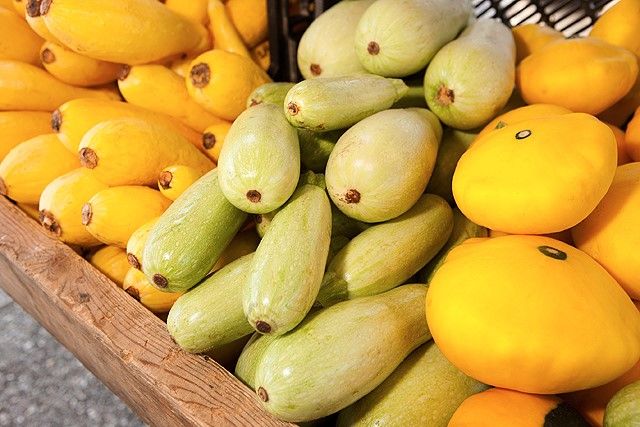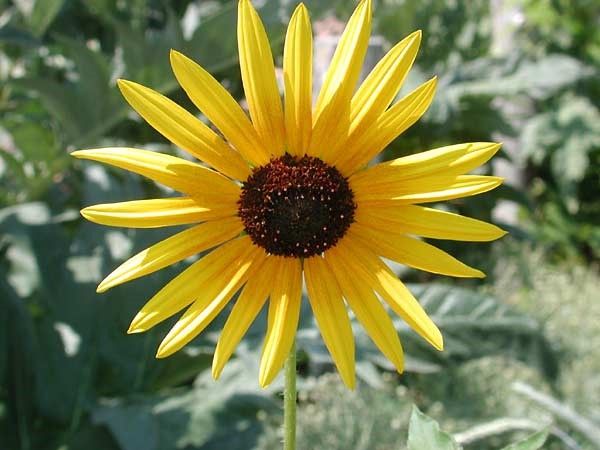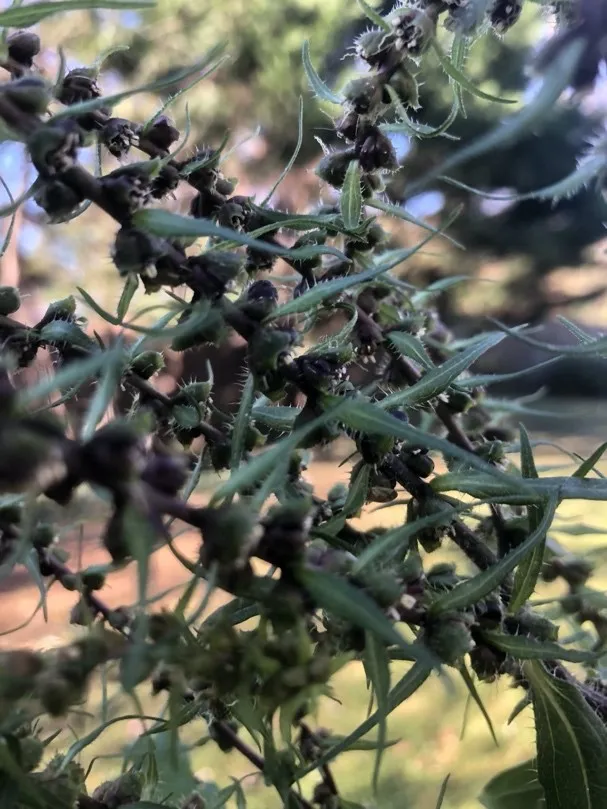NATIONAL MUSEUM OF NATURAL HISTORY
Our Thanksgiving Menu Has Lost a Few Crops
Studying the domestication of any crop that people once ate helps scientists reveal how modern crops have evolved.
:focal(550x353:551x354)/https://tf-cmsv2-smithsonianmag-media.s3.amazonaws.com/blogging/featured/Orange_gourds_growing_among_green_leaves..jpg)
The modern Thanksgiving plate has turkey, mashed potatoes, stuffing and — of course — pumpkin pie.
But long before Thanksgiving, there were other agricultural plants in the Americas. Those domesticated crops are now extinct. Scientists, like Dr. Logan Kistler, Curator of Archaeobotany at the Smithsonian’s National Museum of Natural History, are studying lost crops to learn more about how they may have been cultivated and consumed by Indigenous people. Their research also gives archaeologists more information about why some domesticated plants survive long-term in the human diet while others don’t.
“We rely on domesticated species for our survival. That's not an exaggeration,” said Kistler. “It’s worth knowing anything we can about this evolutionary process, which has played out over thousands of years.”
Digging up clues about past domestication
A plant is domesticated when it finds it easier to live in a human environment than in a wild environment. But domestication is also a two-way street. The plant needs people for its species' survival, while people also need it for food.
“It is an ongoing, symbiotic, evolutionary process that happens when humans and plants come together on a landscape and start to adapt to each other’s company,” said Kistler.
Roughly 10,000 years ago, Indigenous people in the Americas began cultivating plants. Some of these plant varieties evolved into familiar vegetables, like the pattypan squash. But other plants domesticated around the same time have disappeared from the modern menu.

“We have a set of lost crops in Eastern North America that were absolutely foundational for thousands of years to Indigenous societies, but most of them no longer exist,” said Dr. Elizabeth Horton, a paleoethnobotanist and archaeologist with the Lost Crops Network, who studies how the lost crop sumpweed was domesticated.
Other examples of lost crops are goosefoot, a close relative to modern quinoa, and little barley, a relative of modern barley. The domesticated versions of these plants are now only found at archaeological sites, typically in seed form.
Horton and Kistler use both genetic sequencing and experimental farming techniques to determine how and why extinct crops in the Americas were originally cultivated by Indigenous people.
Harvesting lost genomes
To study lost crops’ genetic history, Kistler sequences the DNA of extinct domesticated crops’ ancient seed samples.
“The plant genome is a really big, informative space. If you go back 10 generations, that plant has a thousand ancestors, and another ten is a million ancestors,” said Kistler. “If you can get a few samples, you're not just looking at a few plants, you're looking at the entire evolutionary history of the species in a real-time snapshot of domestication.”
Kistler compares the extinct, domesticated seeds’ DNA to DNA from wild varieties in the same species. This method allows him to see how the varieties’ genomes evolved differently over time. He can tell what traits were favored by past people during domestication.
“We try to understand exactly what’s happening in the plant biologically as it goes through the domestication process. Then, we tie that into how people were triggering, encouraging or selecting various plant properties,” said Horton.
Cultivating field questions
While Kistler analyzes DNA from seed samples, Horton studies how various lost crops may have been cultivated and managed by ancient farmers. She is interested in the domestication of sumpweed, or Iva annua, a plant that Indigenous people likely ate for its fatty sunflower-like seeds.

A few years after planting wild sumpweed in a research garden, Horton noticed that the plant had begun adapting traits also found in its extinct domesticated variety. The plant had grown unnaturally tall, and some of its seeds grew much larger than they did in the wild. Knowing more about how the plant responds to external pressures now, like being cared for in a garden, will help Horton piece together how it may have originally behaved under the care of Indigenous farmers.
“Nobody's cultivating sumpweed anymore as a crop. But it’s important to do this research so that people understand that Indigenous people had a deep long complex relationship to their landscape. It’s part of their cultural heritage,” said Horton.
Replicating how past Indigenous people cultivated crops like sumpweed helps scientists unearth what agricultural practices might have been used by the many complex civilizations that thrived before European settlement.
Sowing the seeds for future research

Lost crops are absent from today’s dinner plate, but they share a history of domestication with crops that humans still eat. For example, while sumpweed is gone, sunflower seeds are still common in grocery stores. Uncovering why sumpweed disappeared while its counterpart remained could help scientists reveal what led to present-day agriculture in the Americas.
"Understanding long-term biodiversity and evolutionary ecology, which is a lot of the research we do, gives us insight into what diversity exists in agriculture,” said Kistler.
Studying the domestication of any crop that people once ate helps scientists reveal how modern crops have evolved. This information is useful because biodiversity in agriculture faces ongoing threats, including those posed by climate change.
“For me, it’s worth characterizing the background and diversity of these past landscapes so that we are a little more prepared for these challenges going forward,” said Kistler. “We do this research because we're anthropologists who want to understand domestication, but it’s also important because it can help us understand our food system.”
Related Stories:
What Chocolate-Drinking Jars Tell Indigenous Potters Now
Some Archaeological Dating can be as Simple as Flipping a Coin
This Thanksgiving, Try the Real Paleo Diet

